How Long Can You Keep Frozen Shredded Cheese
You can freeze shredded cheese, and it's a quick and simple way to save any leftovers that you have. It works great for both store-bought shredded cheese and a cheese block that you shredded yourself.
And in case you were wondering, you can freeze grated cheese the same way. Of course, there's a difference in the size between the two varieties, but it doesn't matter much when it comes to freezing.
Want to learn more?
Read the article to learn:
- which cheese types you can shred and freeze
- how to freeze shredded (or grated) cheese
- ways you can defrost shredded cheese
- tips and tricks that will help you go through the process
Let's get right into it.
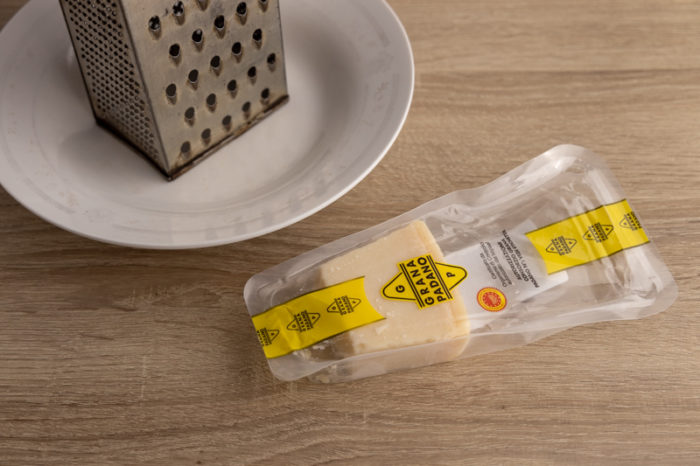
Cheese Types That You Can Shred and Freeze
You can shred and freeze basically any cheese that you grate or shred for your cooking. And that means pretty much all hard cheese, and most semihard ones too.
Here are a few popular cheese types that you can shred and freeze:
- Parmesan
- Grana Padano
- Pecorino Romano
- Gruyere
- Aged mozzarella (the dry and yellowish one, not the white and wet one)
- Provolone
- Cheddar
- Gouda
- Edam
- Emmental
The list above isn't complete by any means, as there are many more hard and semihard cheese types out there. If you grate or shred yours for cooking purposes, you can also freeze it in that form.
Of course, some of the above shred or grate more easily than others, but they all work for the method.
If your cheese wedge or block is difficult to shred because it isn't as firm as you'd like, try freezing it (wrapped) for 30 minutes to an hour. That's not long enough to freeze it entirely, but it should be a bit easier to process.
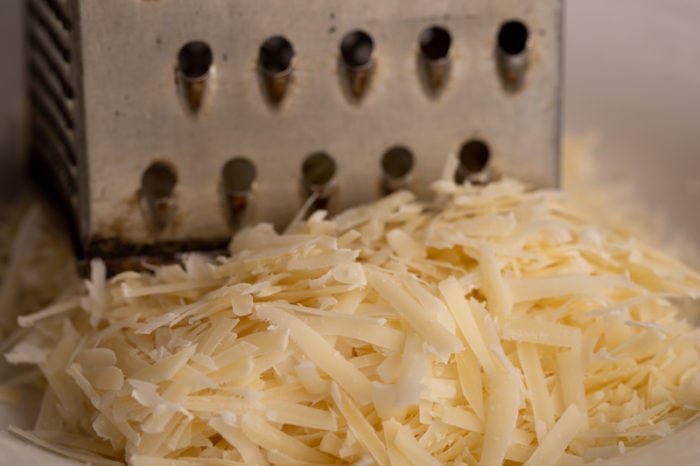
How To Freeze Shredded Cheese
Here's how you freeze shredded cheese:
- Shred or grate the cheese if it's not shredded already. Go with the size that makes the most sense for your needs. Or even divide the wedge in half and use both processing methods.
- Pre-freeze. Place the cheese on a cookie sheet covered with aluminum foil or something else to prevent sticking (I use my silicone mat). Put the cookie sheet in the freezer for 2+ hours or overnight until the cheese freezes.
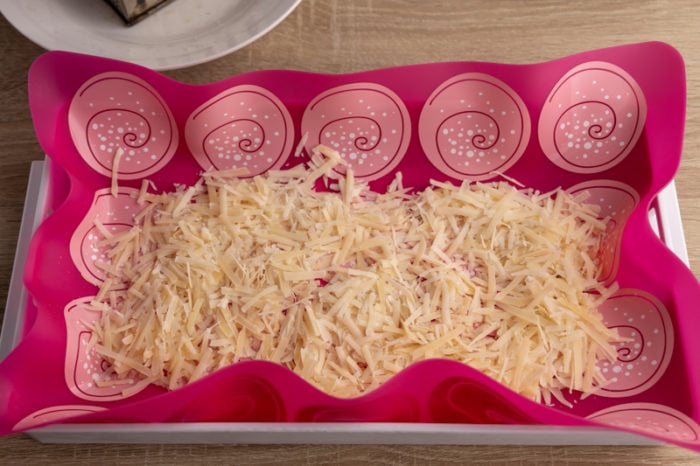
Shredded cheese ready for pre-freezing - Remove clumps. Start by removing the tray from the freezer. The cheese will likely be clumpy, and we want to break up those clumps. To do that, grab a spatula and give the cheese a good stir to get rid of them. Thirty seconds to a minute of stirring will get the job done. This step allows us to quickly grab as much shredded cheese from the freezer bag as we want later on.
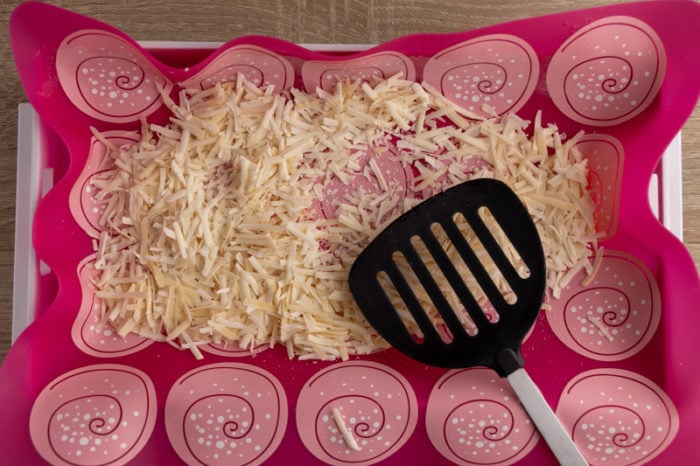
Pre frozen shredded cheese after stirring - Transfer the cheese to freezer bag(s). Use a single bag or as many as you like. Please note that you can scoop as much cheese as you need from a bag with this method, so there's no need to portion the cheese. Remove air from the bags before sealing them. And add a label with the name and date if you like.
- Freeze everything.
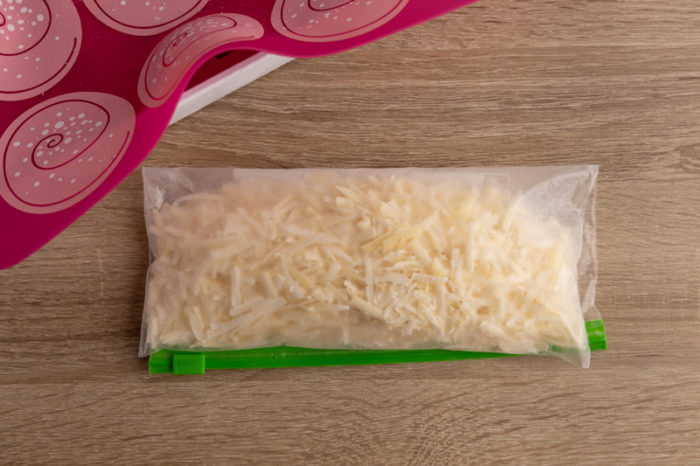
That's it. The whole process takes roughly 10 minutes if you include the time it takes to grate or shred the block. The only downside is that you cannot do everything in one go.
If you're freezing store-bought grated or shredded cheese, it might not clump after the pre-freezing step. If that's the case, you can skip stirring and continue with the next step.
That happens because such cheeses often contain an anticaking agent such as cellulose, cornstarch, or potato starch to prevent clumping.
So, if various brands use it, you might be wondering if you should use it too. Let's discuss that.
Should You Use an Anticaking Agent?
As you can tell, I don't use any cornstarch or potato starch when freezing shredded chef. And in most cases, I don't think you need to use it either.
As I mentioned, the anticaking agent prevents clumps from forming, both when the cheese is refrigerated and frozen.
In my process, I advocate pre-freezing and removing any clumps, which achieves a similar goal without using any extra ingredients. Its main downside is thatthe cheese will stick together if you defrost it in the fridge.
If you want to prevent that, coating your grated cheese with cornstarch or potato starch is the solution.
But for me, I never thaw the cheese in the fridge. Instead, I grab a few teaspoons and sprinkle the frozen cheese all over the dish I'm cooking. If that's how you plan on using your frozen shredded cheese, you don't need an anticaking agent.
Last, if you're short on time and need to skip the pre-freezing step, coating your grated cheese with cornstarch or potato starch is the way to go.
You prep the cheese, coat it, and freeze it in a freezer bag. It's a quick and dirty method, but it gets the job done.
Use an anticaking agent if you want to skip pre-freezing or wish to prevent clumping after defrosting the cheese in the refrigerator.

How Long Can You Freeze Shredded Cheese?
Use your frozen shredded cheese within about 3 months of freezing for best results.
Of course, the sooner you use it, the better, but if you finish the cheese in 4 or 6 months, nothing that bad will happen. The overall quality of the cheese will decrease a bit, but that's it.
In other words,those three months is a pretty arbitrary period, and you shouldn't pay that much attention to it. It's not like the cheese will suddenly go bad or completely lose its flavor if it's frozen for more than the mentioned three months.
For me, I try to use it within a month or so of freezing, when it's still top of mind. Using frozen products as soon as I can is an easy way to always have a bit of free space despite having a small freezer.
If you forget about the shredded cheese being frozen, and it gets buried under other products, chances are it's going to sit in there for months (if not years), and that's no good.
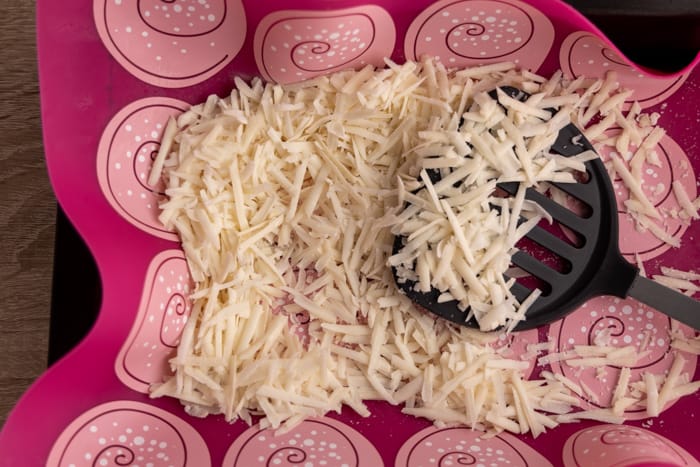
How To Defrost Shredded Cheese
There are two ways to go about using frozen shredded cheese.You can defrost it in the fridge or use it straight from the freezer. I strongly prefer the latter.
Here's how they compare:
- In the fridge. Depending on how much you thaw, the cheese needs between 30 minutes to a couple of hours to defrost. The main downside of this method is that if you don't use an anticaking agent, the cheese clumps after thawing (see my discussion earlier). You can make it a non-issue by sprinkling it on the dish you're prepping and placing it in the fridge. That works well for salads and the like.
- Skip defrosting. This is as easy as it gets. You grab the bag from the freezer, scoop how much cheese you need, and return the bag to the freezer. It works great in pretty much any cooked dish where you melt the cheese. For non-cooked ones, like salads, you can often stir the frozen cheese in and let it sit on the counter for a few minutes. The rest of the ingredients will help defrost the grated or shredded cheese.
Choose the method that makes the most sense for what you're cooking at the moment.

As I already mentioned, I pretty much always skip defrosting and add the cheese directly from the freezer.
That makes it super convenient to use – any time I need some, I open the freezer, grab some, and return the rest. The whole process takes about a minute, and you don't have to worry about the shredded cheese growing mold or drying out in the fridge.
How Long Can You Keep Frozen Shredded Cheese
Source: https://www.canyoufreezethis.com/can-freeze-shredded-cheese/